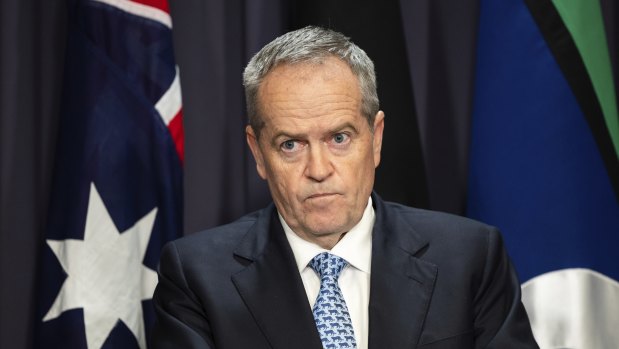Save articles for later
Add articles to your saved list and come back to them any time.
What do you get when you have two governments with soaring debt bills and no one wants to pay for anything?
Buck-passing, cost shifting and blame.
NDIS Minister Bill Shorten.Credit: Alex Ellinghausen
This is the new political reality as Victoria – the jurisdiction with the worst debt of all states and territories – takes on the federal government and asks for more cash to build roads, fund hospitals and care for some of its most vulnerable residents.
The latest barney brewing between the two Labor governments relates to who should pay for the National Disability Insurance Scheme (NDIS), which is on track to cost almost $100 billion by 2032, driven in part by greater rates of children with autism and developmental delays than previously forecast.
In a review handed down by the Minister for the NDIS Bill Shorten in October, changes to keep the scheme more sustainable were foreshadowed, along with an accusation that state governments were underspending on disability and forcing Canberra to pay the lion’s share.
Though state and territory governments have had access to the review for almost a month, there has been a resistance to agree to a plan to limit funding growth over fears they will be asked to kick in more to the scheme, not least because when ministers finally received a copy of the review in October, any detailed costing figures were absent.
While the proposal has angered most jurisdictions, none has suffered more strain that the relationship between Victoria and Canberra.
“Every [state and territory] government, including the Canberra’s Labor-Greens government and the Tasmanian Liberals have been better to deal with,” one federal source familiar with negotiations complained this week.
And it seems the feeling is mutual. Victorian sources claim Shorten’s office has spent months obfuscating and dodging requests for the figures of how much the Allan government will be on the hook for under the planned reforms.
According to the sources, the state government first requested updated modelling from the NDIS at a meeting on April 20, and followed up with similar pleas to the NDIS review panel, at the Disability Reform Ministers Council, and directly with Minister Shorten. The response: Crickets.
The federal government isn’t denying that it has so far refused to provide the estimates, but rather insists it is simply seeking in-principle support. Federal sources also dismiss complaints about who met where and when, pointing out that federal and state disability ministers have met more than any other portfolio except for health.
They also counter claims Victoria is being left out of the loop. Two state government officials were seconded to the NDIS review, giving them direct input and oversight into the process.
There is also the less-believable claim filtering out of Canberra that the real reason any forecast costs were scrubbed from the review is because they are simply “rubbery preliminary estimates” that would be used by the states and territories to try and win the PR battle.
Utter spin. But who can blame them? The federal government knows that revealing the increased costs ahead of next week’s showdown meeting between Shorten and disability ministers will only give the states and territories more ammunition to cry poor.
Originally, the NDIS was intended to be split 50:50 between federal and state governments, but Canberra is now on track to contribute more than 70 per cent to the scheme by 2025 due to its rapid growth.
Sources say it’s unlikely the federal government will seek a return to the 50:50 split, but will instead ask that the states to stop shifting services and equipment they once paid for onto the NDIS, particularly support that can be provided through state-funded schools and hospitals.
This argument has merit. During last year’s state election, one of Labor’s signature disability policies was to fund 89 “NDIS navigators” across state schools to help more children access the NDIS, which is majority funded by Canberra. Cost shifting at its finest.
If this was the only state versus federal barney on the horizon, perhaps there would be the chance of an amicable resolution. But there are more fights forecast.
On Friday, Victorian Treasurer Tim Pallas will lead the charge for a new GST deal over fears a temporary deal, that guarantees all state and territory governments a minimum 70 per cent share of GST revenue, must be made permanent.
Sources say Pallas will suggest Canberra’s $20 billion mining export windfall could be better spent helping the state’s deliver services people need in a cost-of-living crisis.
Victoria faces a grave predicament. Like every other state and territory, it relies on the Commonwealth for the bulk of its funds and sources the rest of its money from an increasing number of state taxes.
In other words, Victoria can hardly afford to back down on the latest NDIS stoush
Annika Smethurst is state political editor.
The Opinion newsletter is a weekly wrap of views that will challenge, champion and inform your own. Sign up here.
Most Viewed in Politics
From our partners
Source: Read Full Article



